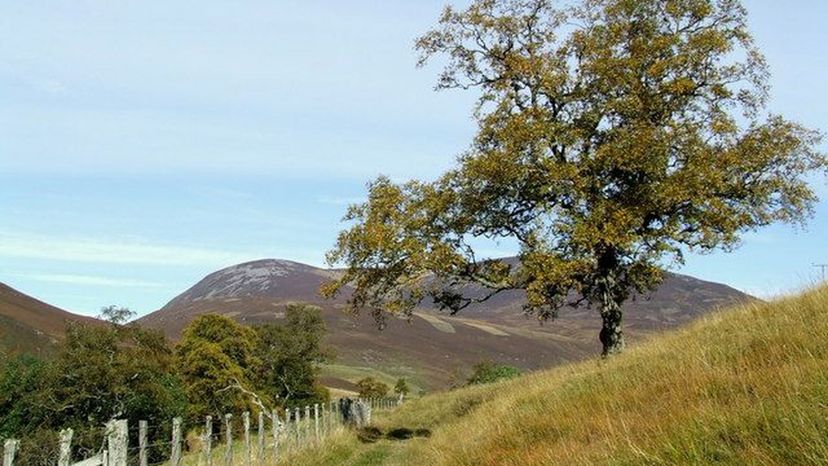
Image: n/a
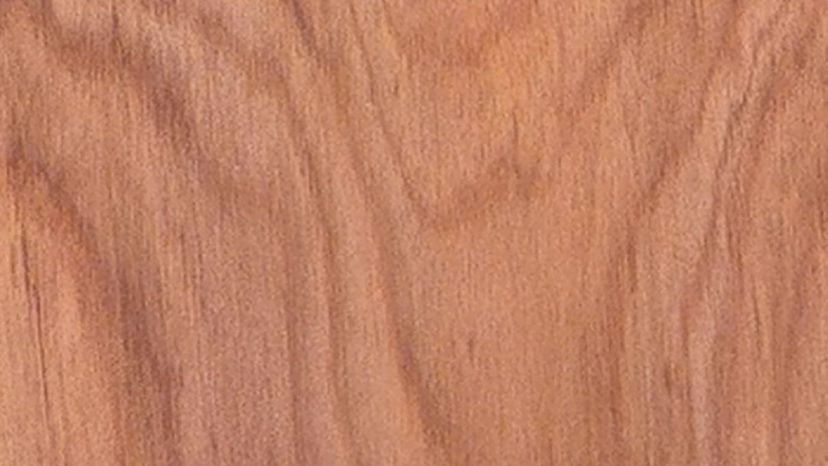
YouTube
Which tree's wood grain is shown in this image?
Gray Birch (Betula populifolia)
Gray birch grows primarily in harsh types of soil - dry ground, abandoned farms and burned-out areas, and gravelly soil. It is frequently found in the lower Hudson Valley and is characterized by its white bark and tall triangular leaves.
Northern Red Oak (Quercus rubra)
Eastern Redcedar (Juniperus virginiana)
Balsam Fir (Abies balsamea)
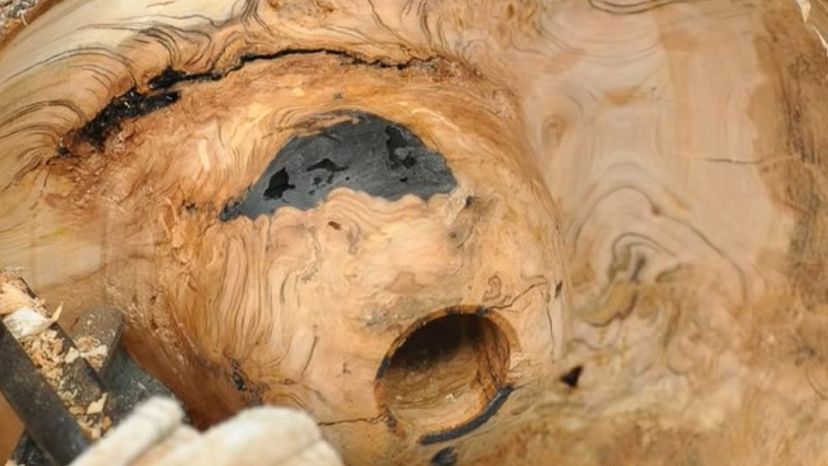
YouTube
Which tree's wood grain is shown in this image?
American Beech (Fagus grandifolia)
Black Ash (Fraxinus nigra)
Pin Cherry (Prunus pensylvanica)
The fruit of the pin cherry tree is loved by birds and small tree-dwelling animals. It is identified by its reddish-brown bark that has a smooth texture, fruit that grows in long-stemmed clusters, and branches that are connected to the trunk at approximate right angles.
Eastern White Pine (Pinus strobus)
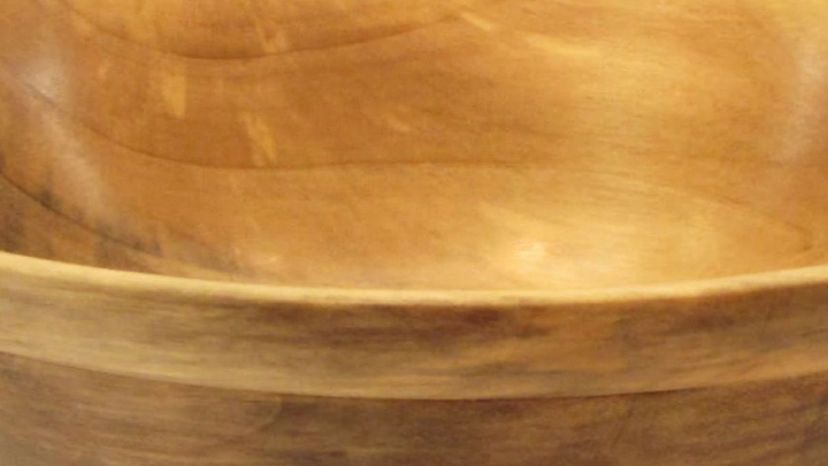
YouTube
Which tree's wood grain is shown in this image?
Yellow Birch (Betula alleghaniensis)
Hawthorn (Crataegus)
Paper Birch (Betula papyrifera)
Quaking Aspen (Populus tremuloides)
The Quaking Aspen holds the title of being the most widely distributed tree in all of North America. It is distinguished by its shiny twigs that have a smooth texture and a reddish brown coloration. It can be found prominently in the state of New York.
Advertisement

YouTube
Which tree's wood grain is shown in this image?
Red Pine (Pinus resinosa)
Eastern Cottonwood (Populus deltoides)
White Spruce (Picea glauca)
The white spruce can be primarily found on the slopes of the Adirondack Mountains, as well as in the surrounding areas. The crushed needles from the tree have a very strong, distinct, and generally foul-smelling odor. White spruce trees have been historically used as ornamental trees and also as Christmas trees
Slippery Elm (Ulmus rubra)
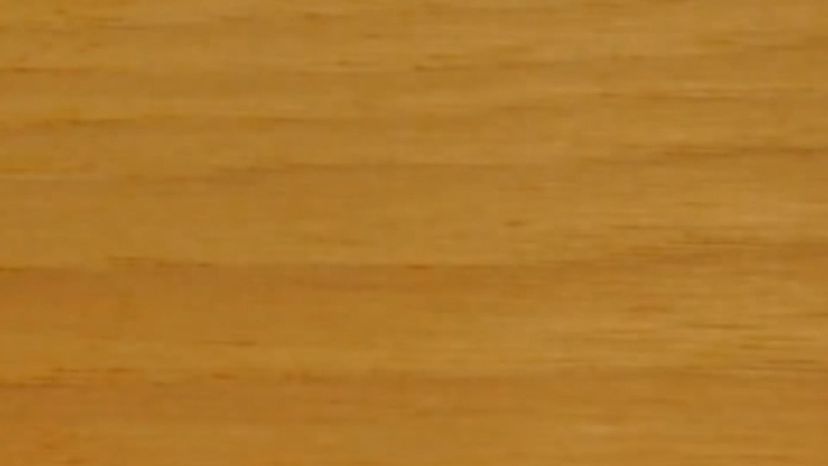
YouTube
Which tree's wood grain is shown in this image?
Sassafras (Sassafras albidum)
Pignut Hickory (Carya glabra)
Pignut Hickory trees are known for their flower buds, which when they are young closely resemble rose buds. The bark of the tree has an overall dark gray coloration and it is textured with narrow ridges and shallow furrows.
Shagbark Hickory (Carya ovata)
Honey-Locust (Gleditsia triacanthos)

n/a
Which tree's wood grain is shown in this image?
Basswood (Tilia americana)
Cucumber Tree (Magnolia acuminata)
Silver Maple (Acer saccharinum)
Black Birch (Betula lenta)
The black birch is an extremely versatile tree. Oil of wintergreen, a medicinal and culinary product, is distilled from the twigs. Black birch wood is strong and is dark brown in color; it is used for fuel and furniture, especially as an alternative to mahogany or cherry.
Advertisement
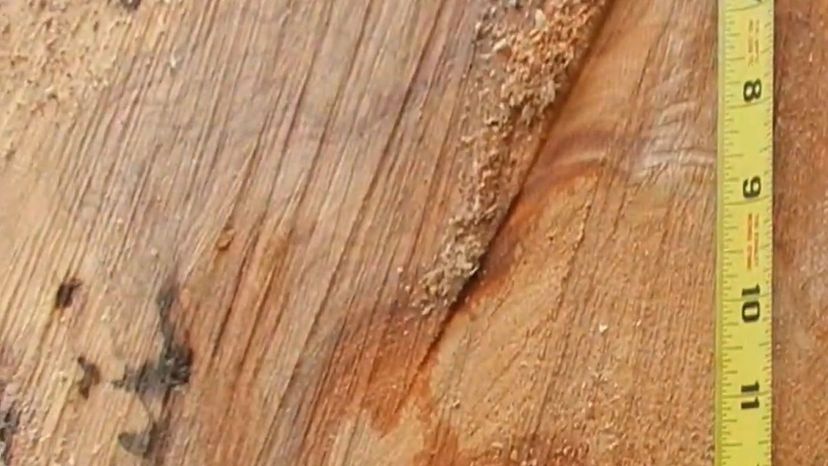
YouTube
Which tree's wood grain is shown in this image?
American Hornbeam (Carpinus caroliniana)
Scarlet Oak (Quercus coccinea)
Scarlet oak gets its name from the vivid coloring of its leaves in the fall. The bark of the Scarlet Oak is light brown in color, with the inner bark being somewhat red.
Bigtooth Aspen (Populus grandidentata)
American Elm (Ulmus americana)
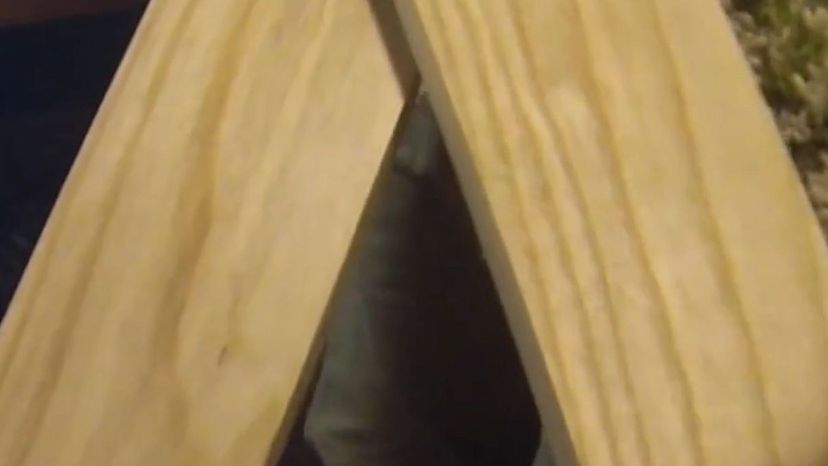
YouTube
Which tree's wood grain is shown in this image?
Black Locust (Robinia pseudoacacia)
Black locust produces wood that is hard and strong but also rough; even when the trunk is young. The bark of the tree is yellowish brown and the tree can also be identified by its compound leaves that consist of smaller oval leaflets.
American Chestnut (Castanea dentata)
Bitternut Hickory (Carya cordiformis)
Eastern Hemlock (Tsuga canadensis)
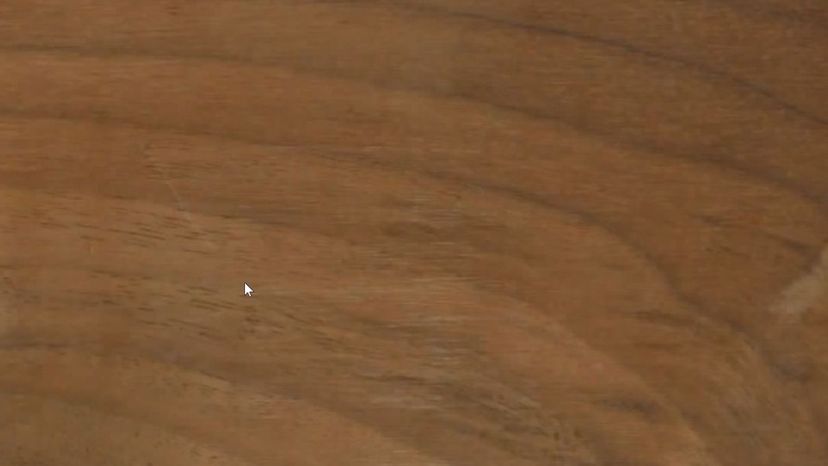
YouTube
Which tree's wood grain is shown in this image?
Arborvitae (Thuja occidentalis)
Black Walnut (Juglans nigra)
While the inner bark of the black walnut is dark brown, the outer layer is actually a dull grayish brown. The tree is noticeable for producing large edible nuts and more importantly strong durable wood - used in cabinetmaking, interior trim and for gunstocks.
Black Willow (Salix nigra)
Sycamore (Platanus occidentalis)
Advertisement
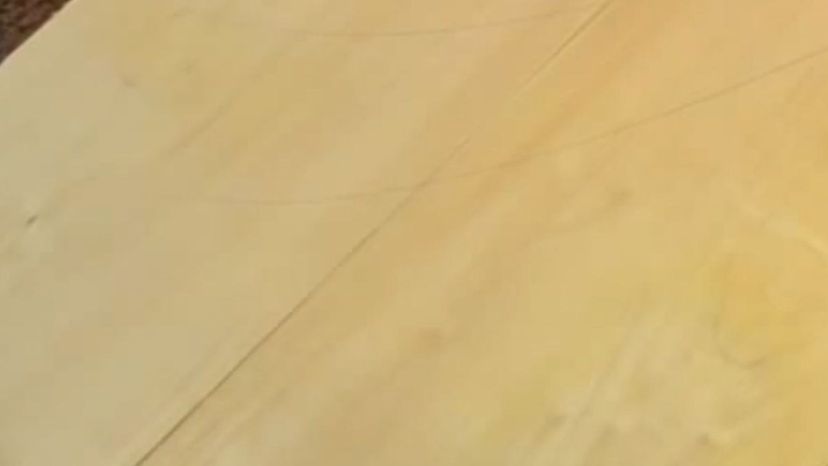
YouTube
Which tree's wood grain is shown in this image?
Pitch Pine (Pinus rigida)
Paper Birch (Betula papyrifera)
American Hophornbeam (Ostrya virginiana)
Basswood (Tilia americana)
Basswood is easily identified by its large heart-shaped leaves that are between 5 to 10 inches long. The bark is a dark gray color and the tree produces a small pea-sized nut that usually comes in clusters.
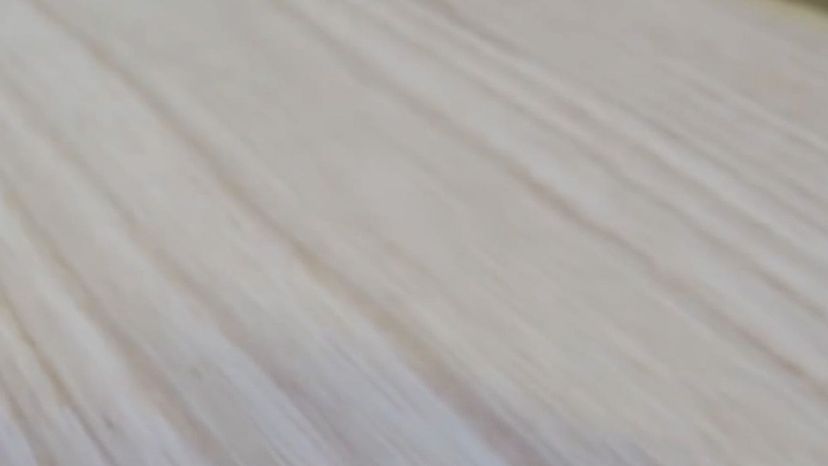
YouTube
Which tree's wood grain is shown in this image?
Bitternut Hickory (Carya cordiformis)
White Ash (Fraxinus americana)
While it can potentially survive in drier soil types, the white ash tree prefers (and is almost always found in) rich, moist, wooded areas. The tree produces compound leaves that in turn are made up of stemmed leaflets; the bark of the tree is dark grayish brown.
Shadbush (Amelanchier canadensis)
Black Cherry (Prunus serotina)

YouTube
Which tree's wood grain is shown in this image?
Cucumber Tree (Magnolia acuminata)
The cucumber tree has earned its name as a result of the fruit that it produces, which comes in the form of a small cucumber-shaped growth. The tree is frequently seen in parks and on lawns because of the yellowish green flowers that it produces and its large leaves.
Red Maple (Acer rubrum)
White Oak (Quercus alba)
Black Ash (Fraxinus nigra)
Advertisement
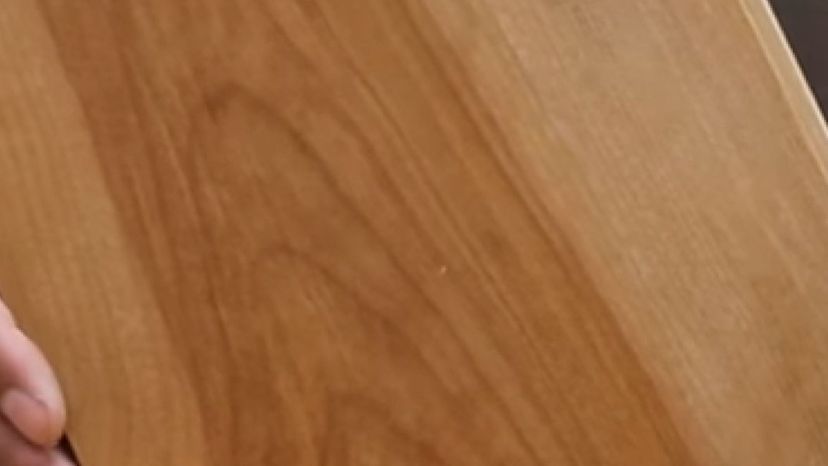
YouTube
Which tree's wood grain is shown in this image?
Red Spruce (Picea rubens)
American Chestnut (Castanea dentata)
Yellow Birch (Betula alleghaniensis)
Yellow birch is largely used for furniture, woodenware, flooring, interior finish, airplanes and agricultural implements. The bark can be observed in a range of colors, from silvery gray to yellow and even reddish brown on some older trees.
Tulip Tree (Liriodendron tulipifera)
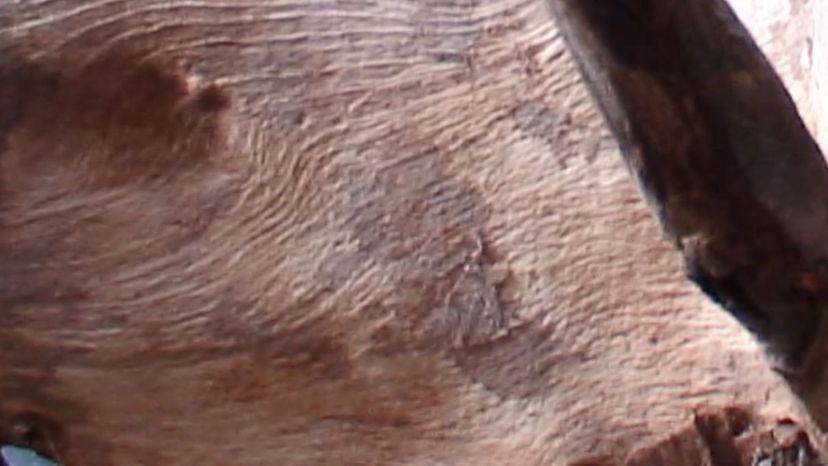
YouTube
Which tree's wood grain is shown in this image?
American Elm (Ulmus americana)
American Hornbeam (Carpinus caroliniana)
The American hornbeam is a relatively small tree that almost never grows larger than 6 inches in diameter. However, the wood that the American hornbeam produces is still very strong and hard, being used for tools such as mallets.
Black Willow (Salix nigra)
American Beech (Fagus grandifolia)
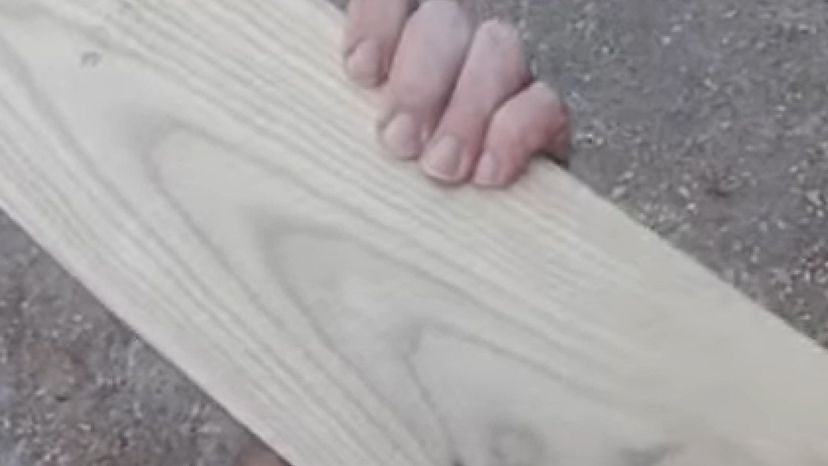
YouTube
Which tree's wood grain is shown in this image?
Chestnut Oak (Quercus montana)
Hawthorn (Crataegus)
Sassafras (Sassafras albidum)
While the wood of this smaller tree is comparatively weak compared to local alternatives, it has other uses. Both the root and the bark of the tree can be used to make tea and some people have even used the wood for simple things like fence posts.
Honey-Locust (Gleditsia triacanthos)
Advertisement
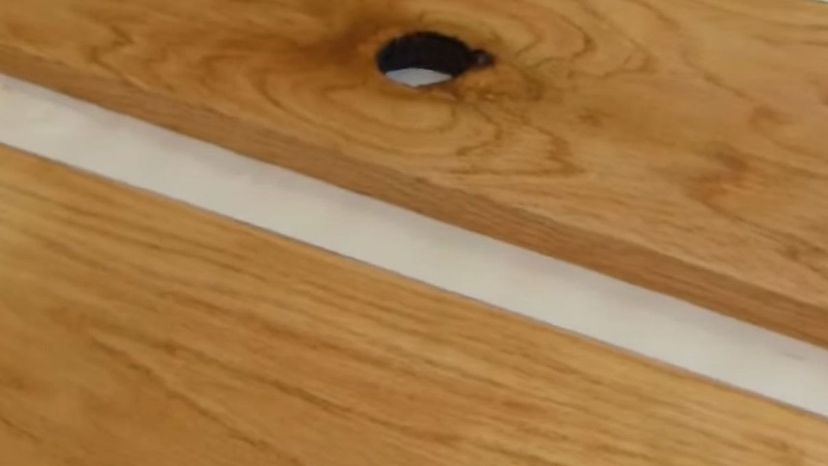
YouTube
Which tree's wood grain is shown in this image?
White Oak (Quercus alba)
Red Pine (Pinus resinosa)
American Larch (Larix laricina)
Northern Red Oak (Quercus rubra)
A large and fast-growing tree, the northern red oak is noted for its ability to survive and even thrive in a wide variety of soil types. The wood comes in a light reddish brown color and is often used for home improvement purposes and making furniture.
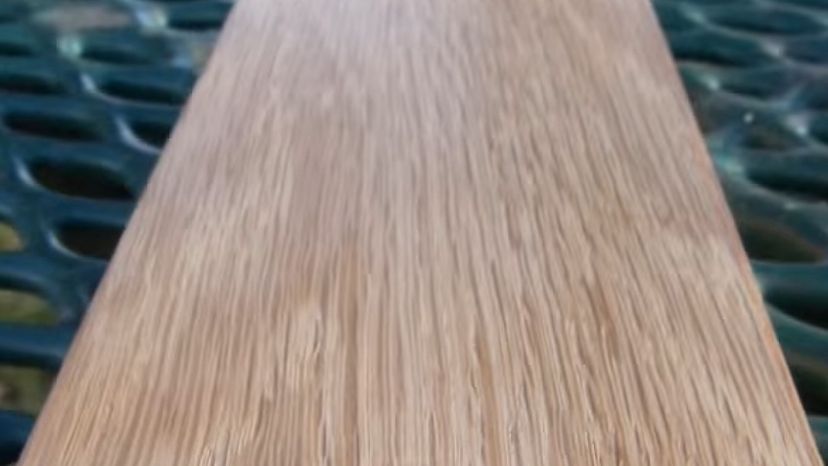
YouTube
Which tree's wood grain is shown in this image?
White Oak (Quercus alba)
White oak is commonly used to craft attractive furniture as well as floors and general implements. The tree is found in both wet and dry areas, has ashy gray bark, and grows acorns that are often eaten by local wildlife.
Black Oak (Quercus velutina)
Arborvitae (Thuja occidentalis)
Slippery Elm (Ulmus rubra)
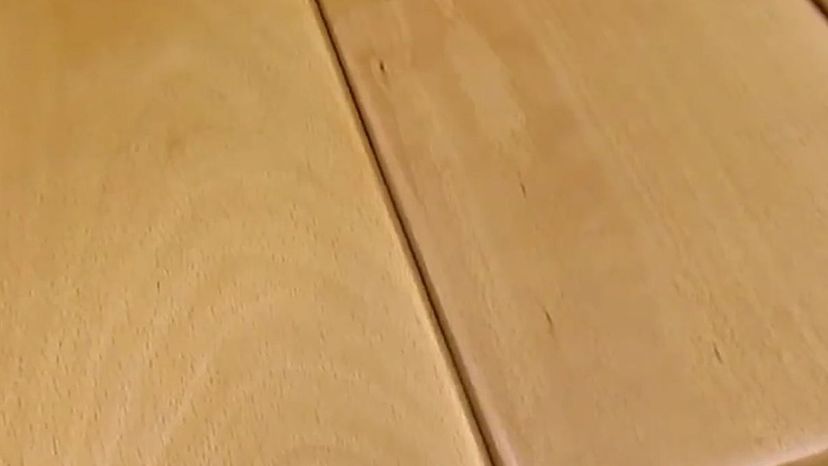
YouTube
Which tree's wood grain is shown in this image?
Gray Birch (Betula populifolia)
Black Walnut (Juglans nigra)
Sycamore (Platanus occidentalis)
American Beech (Fagus grandifolia)
Although American beech produces tough and strong wood, it is not as widely used as other wood types. One of the tree's most noticeable characteristics is the steel gray color of its relatively smooth bark.
Advertisement
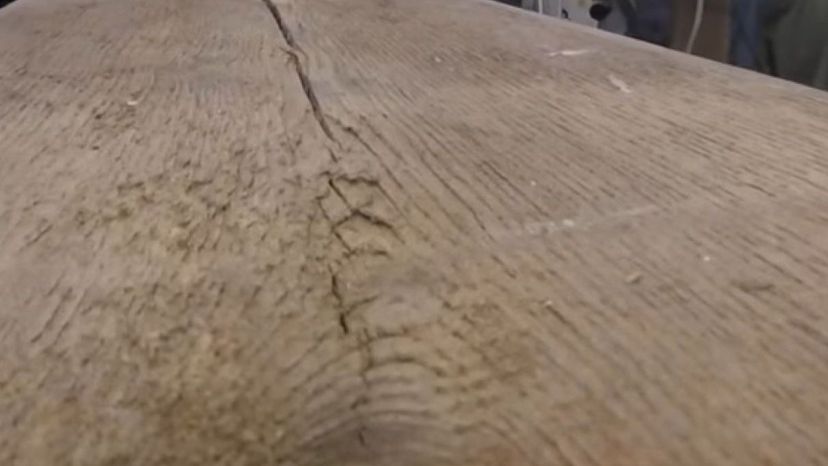
YouTube
Which tree's wood grain is shown in this image?
Balsam Fir (Abies balsamea)
American Chestnut (Castanea dentata)
The wood of the American chestnut is light, soft and relatively coarse-grained. Nowadays, this attractive reddish-brown wood finds its primary use as being crafted into posts of varying sizes. The leaves are long and have sharp points that line the sides.
Butternut (Juglans cinerea)
Sugar Maple (Acer saccharum)
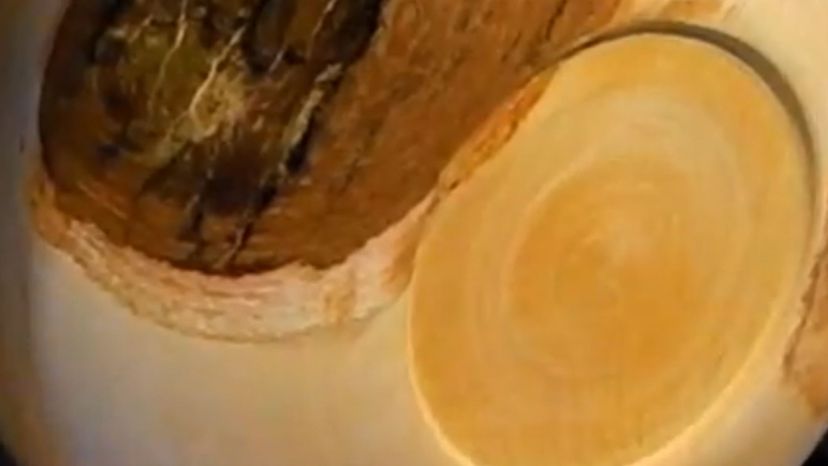
YouTube
Which tree's wood grain is shown in this image?
Shagbark Hickory (Carya ovata)
Chestnut Oak (Quercus montana)
Honey-Locust (Gleditsia triacanthos)
Hawthorn (Crataegus)
Hawthorns are peculiar trees; their small size (generally less than 20 feet) makes them have no commercial value. In fact, many people actually consider them to be pests (comparable to common weeds). Regardless, birds love the berry-like fruit that they grow in small clusters.
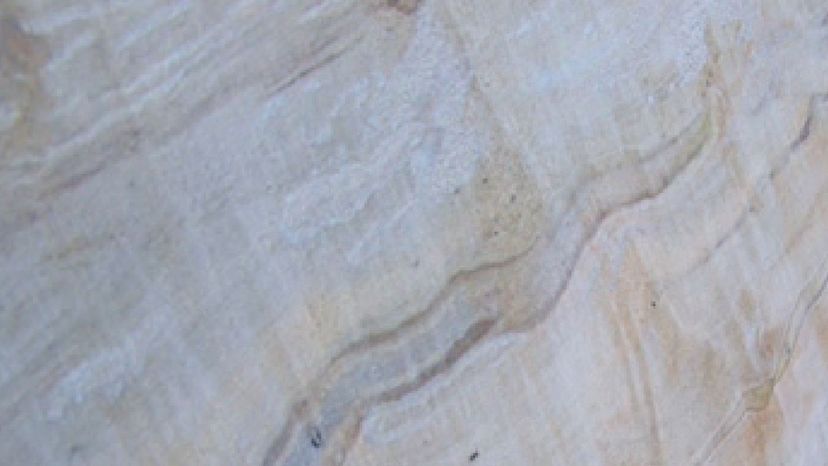
YouTube
Which tree's wood grain is shown in this image?
Black Locust (Robinia pseudoacacia)
Red Maple (Acer rubrum)
Red maple is an extremely rapid-growing tree that is known for having a very strong, close-grained wood. It is used primarily for cheap furniture and in the manufacturing of baskets and crates. The bark has a light gray coloration, similar to beech, which becomes darker as time passes.
Bitternut Hickory (Carya cordiformis)
Red Spruce (Picea rubens)
Advertisement
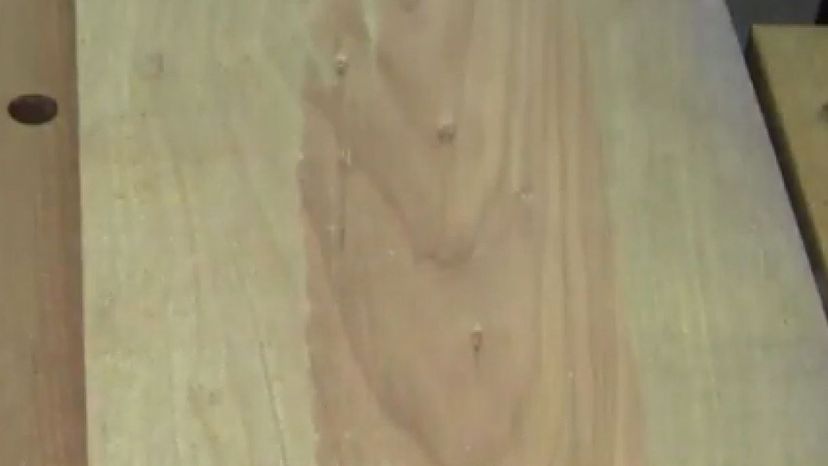
YouTube
Which tree's wood grain is shown in this image?
Black Birch (Betula lenta)
White Ash (Fraxinus americana)
Black Willow (Salix nigra)
The black willow holds the title of being not only one of the largest willows but it is also one of the most widely distributed in northern parts of the country. The bark of the tree is simply brown - ranging from dark brown to light brown.
Eastern White Pine (Pinus strobus)
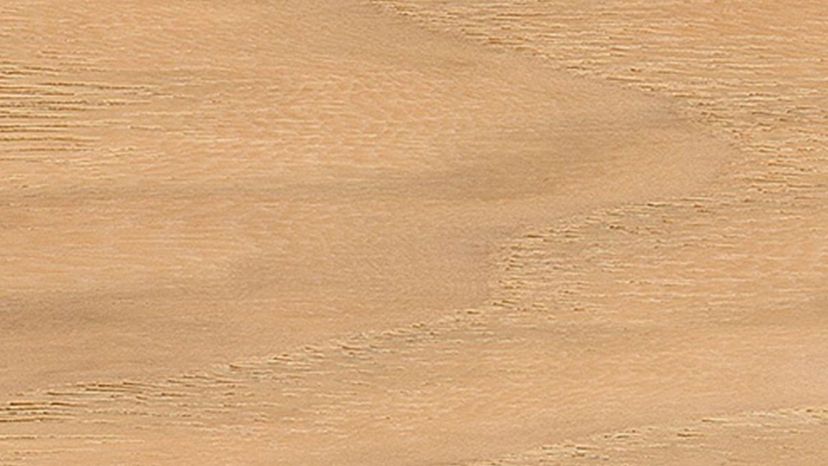
n/a
Which tree's wood grain is shown in this image?
Scarlet Oak (Quercus coccinea)
Sassafras (Sassafras albidum)
Bitternut Hickory (Carya cordiformis)
Bitternut hickory is a tree that grows well on moist, rich soil such as is found in many farm woodlots. The wood is heavy, very hard, strong, tough, and dark brown in color with paler sapwood. It grows compound leaves that are made up of 7 to 11 narrow leaflets.
Sugar Maple (Acer saccharum)
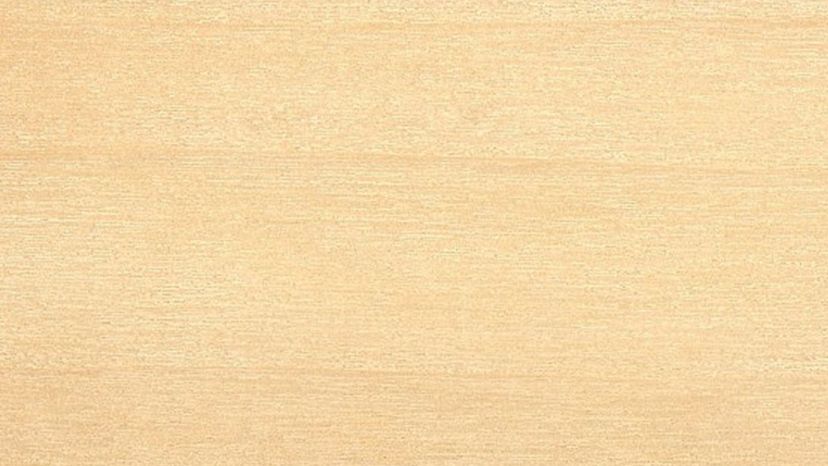
n/a
Which tree's wood grain is shown in this image?
White Spruce (Picea glauca)
Eastern Cottonwood (Populus deltoides)
The eastern cottonwood has a very notable history of being planted as an ornamental tree is several parts of the country. However, this practice is not as popular as it once was, since the roots often penetrate sewers and drains, and even when cut the stump will continuously sprout.
Red Pine (Pinus resinosa)
American Larch (Larix laricina)
Advertisement
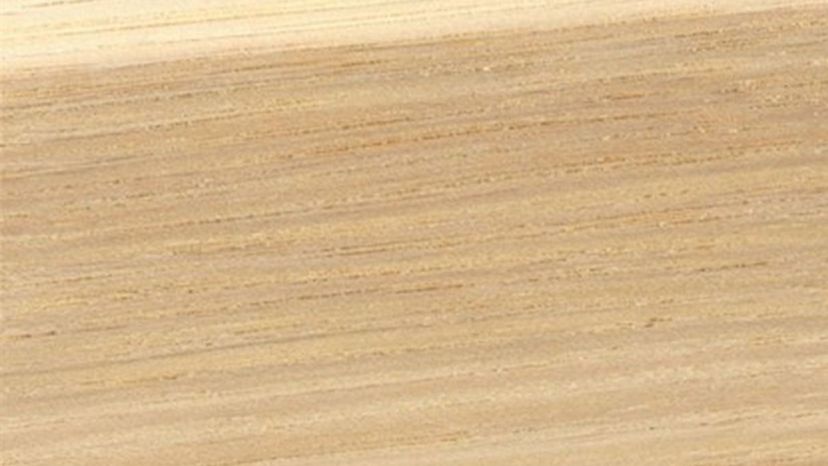
n/a
Which tree's wood grain is shown in this image?
Shagbark Hickory (Carya ovata)
The shagbark hickory produces a very heavy, tough, elastic, close-grained, wood that is primarily used for handles, vehicles, agricultural implements, and fuel. The fruit is also important to the local ecosystem since many animals make it a key part of their diet.
Black Ash (Fraxinus nigra)
Hawthorn (Crataegus)
Northern Red Oak (Quercus rubra)
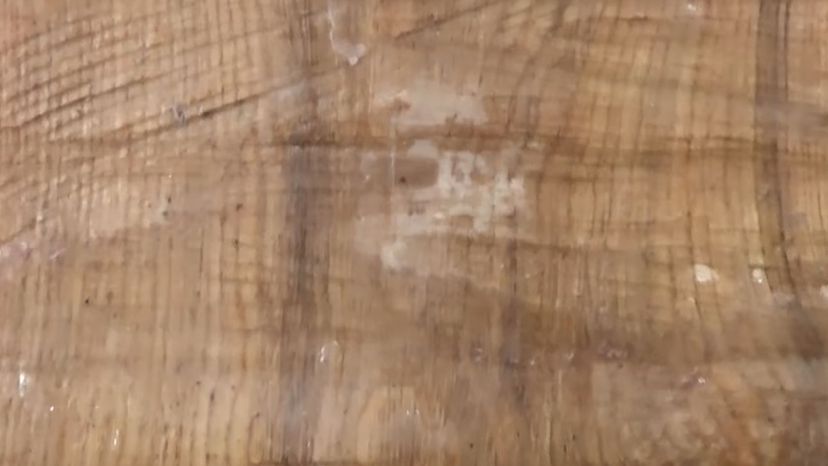
YouTube
Which tree's wood grain is shown in this image?
Cucumber Tree (Magnolia acuminata)
Quaking Aspen (Populus tremuloides)
Chestnut Oak (Quercus montana)
The origin of the name for the chestnut oak is easy enough to understand; it is simply derived from the fact that the tree grows chestnut-like leaves. This naming is somewhat funny yet frustrating, since some people mistakenly believe that the tree is an actual chestnut tree.
Tulip Tree (Liriodendron tulipifera)
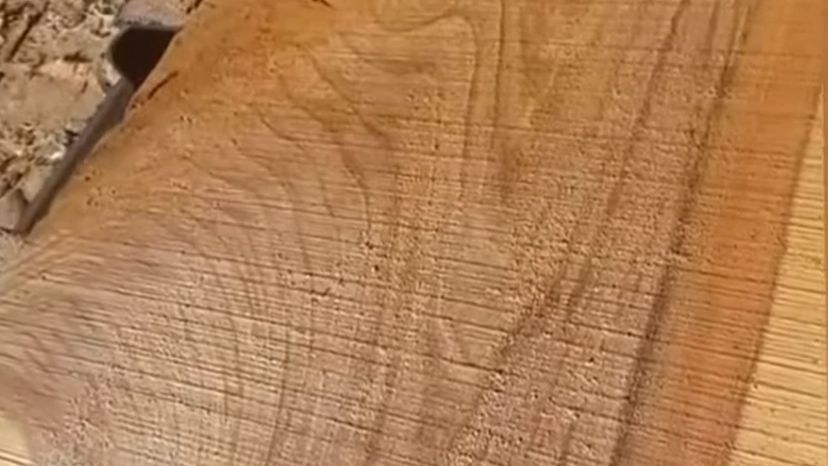
YouTube
Which tree's wood grain is shown in this image?
Red Maple (Acer rubrum)
American Elm (Ulmus americana)
The American elm is a very well-known tree across the country; however, it is extremely popular in the state of New York - being one of the largest trees that can be found there. The bark is dark gray and the leaves have a simple oblong shape with serrated edges.
Scarlet Oak (Quercus coccinea)
Shadbush (Amelanchier canadensis)
Advertisement
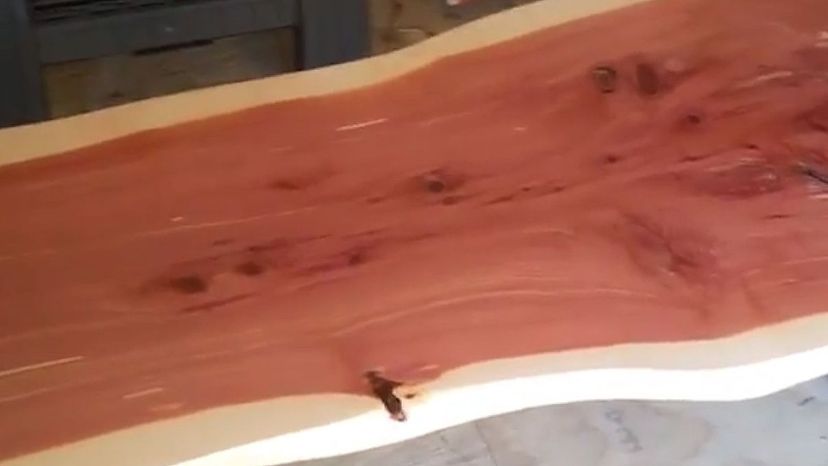
YouTube
Which tree's wood grain is shown in this image?
Pin Cherry (Prunus pensylvanica)
Yellow Birch (Betula alleghaniensis)
Balsam Fir (Abies balsamea)
Eastern Redcedar (Juniperus virginiana)
The eastern redcedar is primarily characterized by its soft and brittle reddish brown wood. As a result of this, this wood cannot be used for heavy duty construction purposes. Instead, it sees a notable amount of use in the production of pencils, interior finishes and simple lightweight furniture.
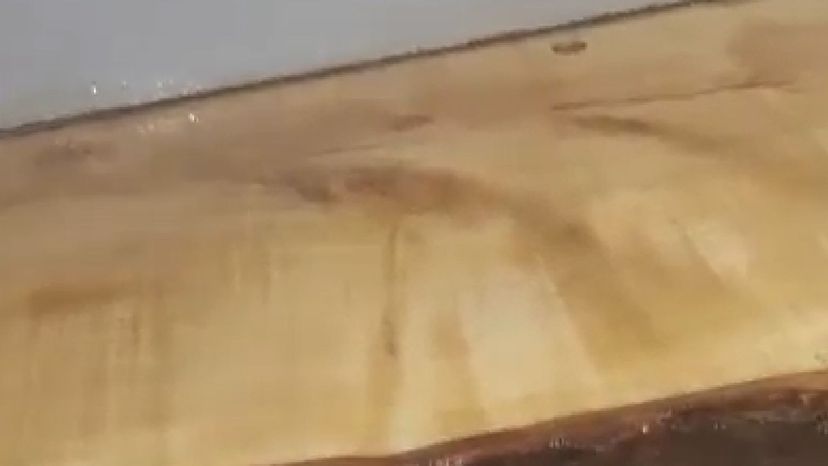
YouTube
Which tree's wood grain is shown in this image?
Black Cherry (Prunus serotina)
Gray Birch (Betula populifolia)
Silver Maple (Acer saccharinum)
The silver maple has aptly earned its name due to the smooth texture that it has and the grayish color that younger trees have. However, it should be noted that once the trees become older, this gray becomes more and more tinged with a dull red color; with some old silver maples taking on a consistent reddish-brown coloration.
Pignut Hickory (Carya glabra)

YouTube
Which tree's wood grain is shown in this image?
Sycamore (Platanus occidentalis)
Black Walnut (Juglans nigra)
White Oak (Quercus alba)
Black Ash (Fraxinus nigra)
The black ash differs from a lot of other trees on this list primarily for the fact that it can be commonly found in deep swamps. However, quite a few of them have been found in other areas, such as wet, cold forests.
Advertisement

YouTube
Which tree's wood grain is shown in this image?
White Ash (Fraxinus americana)
Paper Birch (Betula papyrifera)
The paper birch is a shade-intolerant tree that has the ability to grow on a wide range of soils, however; it particularly thrives along lakes, streams, and swamps. Younger trees have a reddish brown or even golden color, while as they age they become chalky white.
Black Willow (Salix nigra)
Eastern Hemlock (Tsuga canadensis)
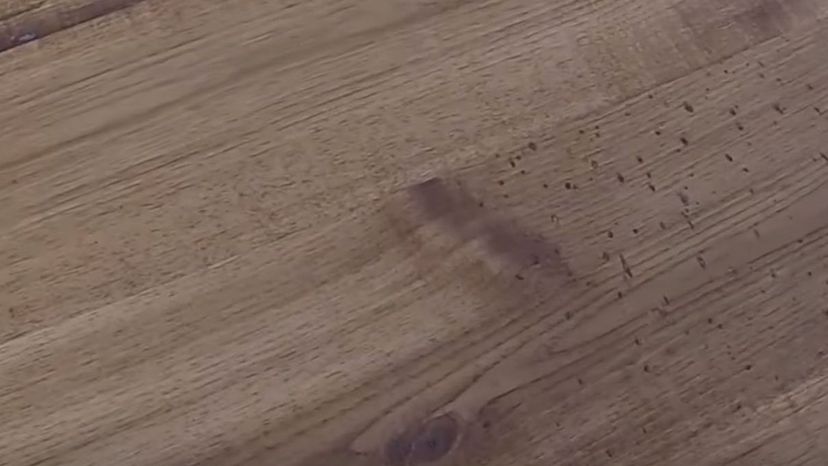
YouTube
Which tree's wood grain is shown in this image?
Butternut (Juglans cinerea)
The butternut is actually closely related to the black walnut tree. It is notable for the fact that it produces edible nuts and a very attractive wood that is light brown and soft. Since it is not as strong as other alternatives, it is primarily used for decorative woodworking; such as interior trims.
American Hornbeam (Carpinus caroliniana)
Pignut Hickory (Carya glabra)
Silver Maple (Acer saccharinum)
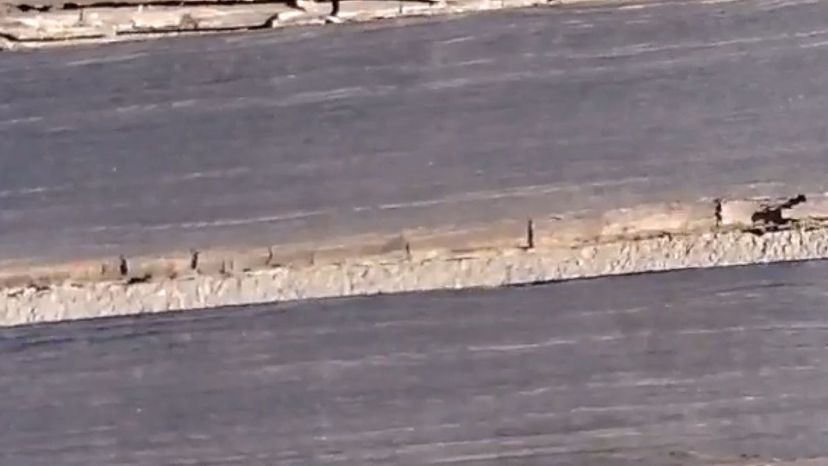
YouTube
Which tree's wood grain is shown in this image?
Black Birch (Betula lenta)
Arborvitae (Thuja occidentalis)
Black Oak (Quercus velutina)
While not as valuable as the red oak or as fast growing, the black oak still produces a very hard and strong wood. As a result of this, it can often be seen being used for construction-related purposes and even for fuelwood at times.
Eastern Redcedar (Juniperus virginiana)
Advertisement

n/a
Which tree's wood grain is shown in this image?
American Chestnut (Castanea dentata)
Pin Cherry (Prunus pensylvanica)
Red Spruce (Picea rubens)
Red spruce produces a soft wood that one would initially assume has no notable uses out of the ordinary. However, this type of wood actually has a resonant quality that makes it exceedingly valuable for the sounding boards of musical instruments.
Black Locust (Robinia pseudoacacia)

n/a
Which tree's wood grain is shown in this image?
Quaking Aspen (Populus tremuloides)
Northern Red Oak (Quercus rubra)
Shagbark Hickory (Carya ovata)
Balsam Fir (Abies balsamea)
Wood from the balsam fir is noticeably light, soft and coarse-grained. While this tree is not valued by virtually anyone as a source of lumber, it has other decorative uses in the country. It sees a lot of usage as a Christmas tree.
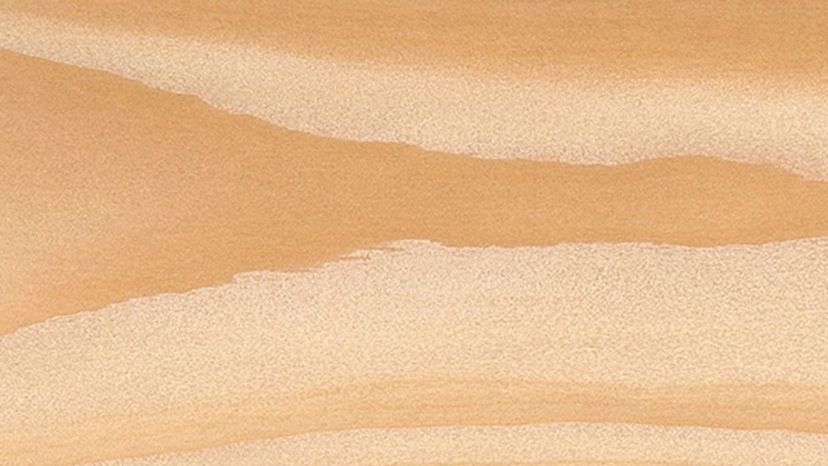
n/a
Which tree's wood grain is shown in this image?
Sugar Maple (Acer saccharum)
Silver Maple (Acer saccharinum)
Eastern Hemlock (Tsuga canadensis)
The wood of the eastern hemlock is coarse-grained, light, splinters easily, not strong, brittle, and not durable. However, this light brown wood still sees some usage as construction lumber and is also in demand for mechanical pulp.
White Ash (Fraxinus americana)
Advertisement

n/a
Which tree's wood grain is shown in this image?
Yellow Birch (Betula alleghaniensis)
Tulip Tree (Liriodendron tulipifera)
The wood from the tulip tree is light, soft, brittle, not strong, straight-grained, light yellow or brown in color, and is largely made into lumber and interior finish and used where a soft, easily worked wood is required.
Butternut (Juglans cinerea)
Pignut Hickory (Carya glabra)

YouTube
Which tree's wood grain is shown in this image?
Sycamore (Platanus occidentalis)
The sycamore is a relatively large tree that loves fertile and moist soil. As a result, this tree can often be found in damp woods, as well as along streams and the banks of rivers. Crates and even furniture are often crafted from this wood.
Sassafras (Sassafras albidum)
Eastern Redcedar (Juniperus virginiana)
White Spruce (Picea glauca)
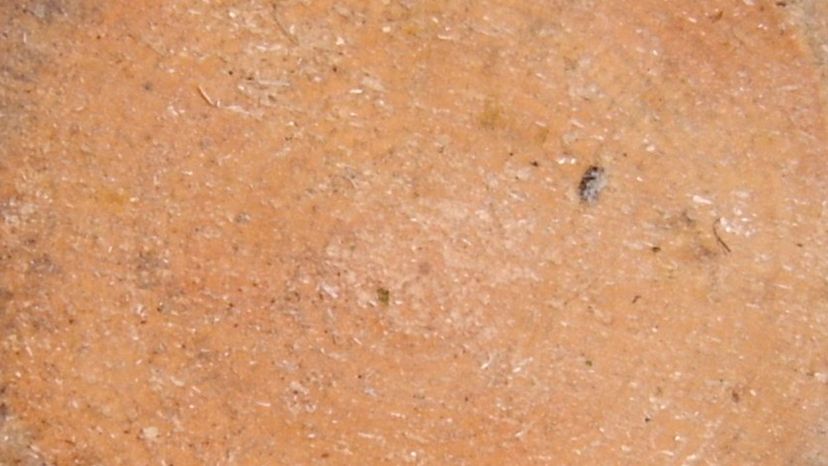
n/a
Which tree's wood grain is shown in this image?
Tulip Tree (Liriodendron tulipifera)
Eastern White Pine (Pinus strobus)
The wood of the eastern white pine tree is soft, has a very light brown color, and is relatively easily worked. It also has a wide range of uses: from interior trim, sash and doors to boxes and buckets.
Red Spruce (Picea rubens)
Scarlet Oak (Quercus coccinea)
Advertisement

n/a
Which tree's wood grain is shown in this image?
American Hophornbeam (Ostrya virginiana
The weirdly named American hophornbeam is (quite obviously) closely related to the American hornbeam. The strength and coloration of the wood has earned it the nickname "ironwoodâ€. It is primarily used for making handles for tools and for fuelwood.
Black Oak (Quercus velutina)
Black Walnut (Juglans nigra)
Gray Birch (Betula populifolia)
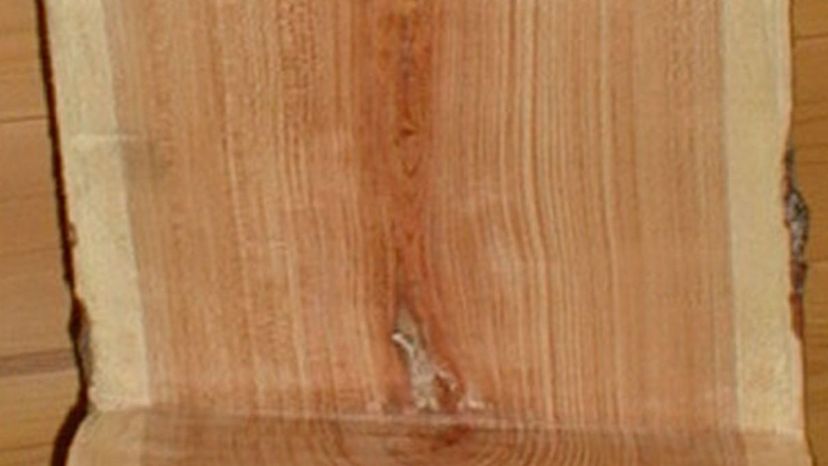
Wiki commons
Which tree's wood grain is shown in this image?
Black Birch (Betula lenta)
Honey Locust (Gleditsia triacanthos)
The primary use that the honey locust sees is for ornamental purposes; however, the wood is strong and so some have found more hands-on uses for it. The tree grows compound leaves that can have up to 28 leaflets.
Shadbush (Amelanchier canadensis)
Red Maple (Acer rubrum)
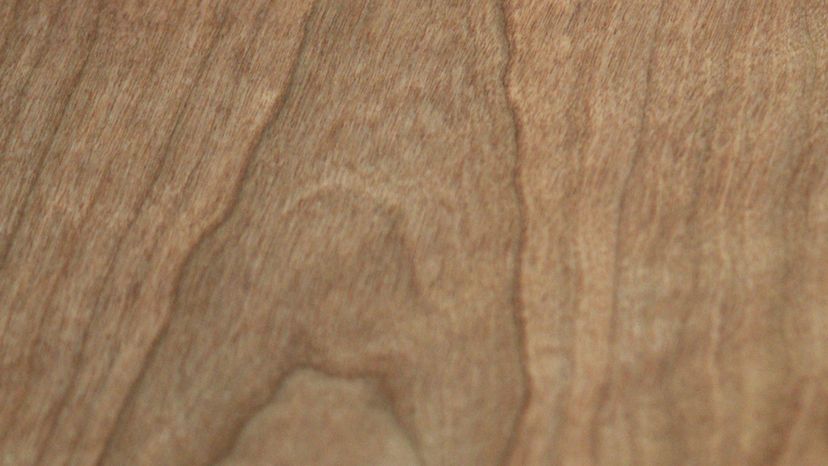
Wiki commons
Which tree's wood grain is shown in this image?
Chestnut Oak (Quercus montana)
Cucumber Tree (Magnolia acuminata)
Black Cherry (Prunus serotina)
The black cherry tree produces a small single-seed fruit that is loved by a wide variety of animals, especially birds; however, this fruit is actually noticeably bitter.
Cucumber Tree (Magnolia acuminata)
Advertisement
You Got:
/42
n/a